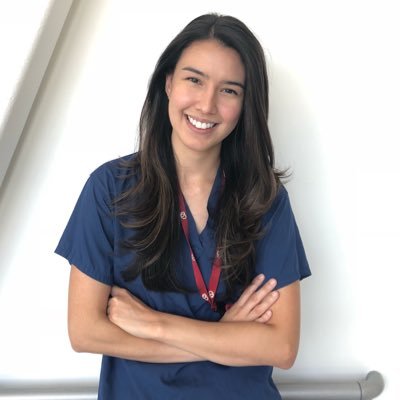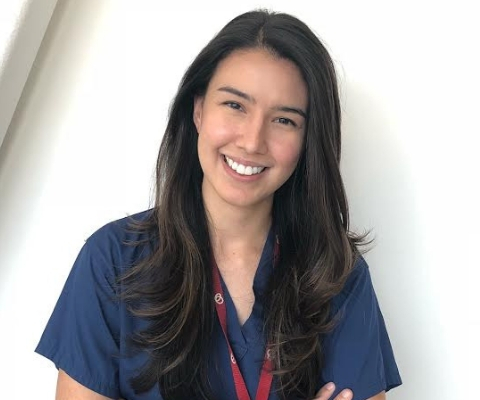The team here at EMOttawa wanted to take some time this week to acknowledge National Indigenous Peoples Day, by highlighting important Indigenous contributions to healthcare, recognizing our biases and on how one may provide help as an ally. We wanted to start the week off by asking uOttawa Cardiac Surgery alumni, Donna Kimmaliardjuk, to talk about improving healthcare delivery to our Indigenous patients, and what National Indigenous Peoples day means to her.
Hey! My name is Donna May Kimmaliardjuk, and I’m Inuk (singular for Inuit), and a cardiac surgeon. I’m currently finishing my fellowship at The Cleveland Clinic in advanced cardiac surgery (with a special focus on myectomies), and will be joining the Eastern Health Sciences Center in St. John’s, NL as a staff cardiac surgeon this summer (yes b’y!).
I grew up in Ottawa, and then returned home for my cardiac surgery residency. My family originally settled in Ottawa because it was a major city that could provide good educational opportunities for my brother and I, and it also has a large Inuit population, so we could remain connected to our culture. I was touched when EMOttawa reached out to me to write a piece about National Indigenous Peoples’ Day, but, to be honest I originally felt a bit hesitant.
How do I write a piece about celebrating our cultures, when it just feels like an empty gesture? Recent history has been a tough pill to swallow. News about the mass graves found at residential schools reinforces the idea that Canada has not cared about us or our cultures. What about when we all saw Joyce Echaquan die in a hospital after being accosted by racist healthcare providers? How do I write a piece that doesn’t just make you feel like I’m bashing you (a non-Indigenous healthcare provider)?
I hope you don’t feel that way after reading this. I don’t have all the answers to improving healthcare outcomes/the healthcare experience for patients – this is a multifaceted problem that will take time to change, but, I do believe there are things that you as an individual can do to create positive change.
That’s how I was raised – when feeling overwhelmed by a huge task, I was taught to break it down into little parts that I can address, and to focus my energy on what I could control/change. This is no different – we must each put energy into what we can control and do as a single person, and doing this together, we can make significant, impactful change.
National Indigenous Peoples’ Day. What does it mean to me?
To be honest, it’s not something I had thought about at all growing up, or even as a young adult. But as an Indigenous person who works in healthcare, and also has been publicly recognized as an Indigenous Physician (have any of you had “being a resident doctor” be a national news story?), I absolutely think about it, and recognize that I must use my platform to create awareness and change.
I am glad that there is a day to recognize and celebrate Indigenous Peoples of Canada, but to be honest, it feels hollow, knowing that most non-Indigenous Canadians don’t care about this day. That most Canadians don’t care about Indigenous People, and their equality, health, or prosperity. That even in 2021, racism is a persistent problem. Most don’t truly appreciate Canada’s history towards, and ongoing treatment of Indigenous peoples. It makes people uncomfortable – they don’t want want to talk about it, or feel as if they’re being blamed for their ancestors actions. There is a tendency to retreat within a defensive shell when Indigenous People bring this up, a sentiment or feeling of ‘not this again’ – and it is this cognitive bias that I want to help eliminate.
As healthcare providers, we are supposed to treat all of our patients fairly, justly and with freedom from judgement or discrimination. As healthcare providers, we have a responsibility to provide culturally-competent care as well. I think, in order to do so, one must have some understanding and knowledge around the history of colonization, including the impact of residential schools and the modern day ramifications (inter-generational trauma, etc).
One needs to have an understanding of, or empathy towards how some Indigenous People are coping (or not coping) with their trauma – and how this is affecting their health, and their perceptions towards the healthcare system.
I’m not saying you need to be versed n the complete history, or treaties, but I urge you to read the Truth and Reconciliations Call to Actions (even just the section on healthcare). Engage with your departmental, hospital or university EDI committees, or take a course on providing culturally-competent care, and please, check yourself. Check your biases, and take a minute to reflect on your interactions. Everyone has biases – it doesn’t mean you’re a bad person if you have certain preconceived notions, these are cultural instillments – but reflect on what has shaped these perceptions, and what reinforces stereotypes that you have embraced? These thoughts and reflections are uncomfortable – but it is important to address these thoughts or perceptions you have, and upon recognition, you can actively work to change then.
In medical school, I remember learning about the narrative that if you, as a healthcare provider, could not adequately provide care for abortions, or to LGBTQIA+ patients etc. because of your own views or beliefs, that you had the responsibility to refer that patient to someone who could provide them proper care. At a minimum – we must consider the provision of appropriate, bias-free healthcare to Indigenous patients, or referral to a colleague who can provide this care. While writing that feels like a no brainer, the recent history of the treatment of Indigenous People’s would suggest this needs reminding.
Indigenous People often face bias because of different cultural beliefs, distrust of the medical system or because of addiction. A history of abuse and poor care has fostered a mistrust in the medical system. Addiction related diseases are often brought about as a result of significant and institutionalized trauma – so before succumbing to bias, pause and think why? Think about what YOU can do to improve the healthcare experience for that person coming in. That person who is scared, stress, or frustrated, but who is coming to you for help.
How can you provide the best care for this person? How can you adequately care for them? Know that the starting place for this may be by starting with finding a translator. It sounds basic, but too often I have witnessed healthcare providers speaking at (rather than having a conversation with) a patient. How can you feel good about the care provided when the patient who needs it, doesn’t even understand what you just said? I get that getting a translator is going to slow you down and is inconvenient, but providing medical care is not about what is most convenient, it is about what is best for the patient.
So, I leave you with one final thought; how can you provide the best care to the person in front of you, who, at the end of the day is another human being – looking to you for your help and care.
That is why a lot of us went into medicine in the first place, isn’t it? To help people.


